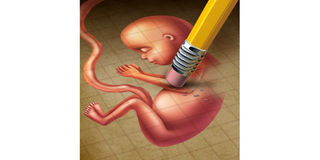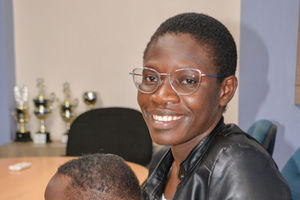
Miscarriage is a widespread yet silent trauma affecting many women.
Miscarriage is a subject whispered by many, and only a few are bold enough to speak openly about it. Rarely will you see anyone on social media revealing that they have experienced a miscarriage. That the child they were carrying in their womb never got to term.
Even in real life, away from social media, there are hardly any ceremonies or rites to mark the end of an unborn child’s life. No aunts visit the family bearing gifts like chicken soup or even advice. Only suspicious looks and muted condolences messages, if any.
The woman who has lost her unborn baby is expected to bear the anguish quietly and carry on as if nothing has happened. For this reason, when this misfortune visits them, many women experience great distress and loneliness, which often leads to psychological trauma.

Doctors urge open conversation, testing, and healing as key steps forward.
Miscarriage, also known as spontaneous abortion, is the sudden loss of pregnancy before the 28th week. According to the World Health Organisation (WHO), one in every four pregnancies ends in a miscarriage.
Edith Moraa, a salonist based in Rongai, Kajiado County, had three miscarriages, which almost broke her marriage. She says she would not wish any other woman to ever go through what she went through.
“It is a loss that cannot be seen, only felt. In my first pregnancy, all was well until the third month when I started becoming very tired and feeling sickly,” she said.
One night, she could not sleep as she had a very sharp pain in the stomach, which was growing worse by the hour.
In the middle of the night, she began wailing from the pain and was rushed to hospital. The doctor prescribed medicine to numb her pain, but nothing changed.
“I remember being asked to take an ultrasound, and after that, the doctor just looked at me funny. I knew all was not well,” Edith says.
She was advised to terminate the pregnancy as the foetus was not responsive. This was already an agreement that had been made by three doctors.
“I did not have an option. I had to do as the doctors advised.” She remained hopeful that she would one day hold a baby in her hands.
What pained her the most was that she had already began shopping for herself, and had bought everything the unborn child would need.
“We used to go shopping with my husband. We had bought many clothes in preparation for the baby. I wondered what to do with the items after the miscarriage. I decided to keep them,” she said.

Despite deep emotional trauma, both women refused to give up hope and are now speaking out to break the stigma surrounding miscarriage.
She said that she is lucky her husband stopped overreacting and, with time, got to understand her.
“One year down the line, I was pregnant again. I was very happy when I learnt about it,” she said. However, in the 20th week of pregnancy, the same challenges surfaced.
Just like in the first instance, the doctors said that she did not have any option but to do away with the pregnancy. This time round, her womb was too weak to carry the baby to full term.
“This crushed me to pieces. I did not know what to do next. Thankfully, my husband still stood with me,” she said.
Edith was advised by women in her neighbourhood to change her diet and also not to engage in heavy labour. However, this didn’t work, as she still lost the foetus in the 28th week.
All that time, she was thinking of throwing away the clothes she had bought when she was first pregnant, but her husband kept telling her not to do so.
The desire and hunger for a child was too much. She was almost giving up.
“I was so tired of waiting, of the disappointment. I had already began accepting that I was not supposed to have children. I did not see any reason for keeping the clothes with me,” she said.
Whenever she looked at the clothes, she was reminded of the challenges she had gone through. The items made her cry at random times during the day, especially when her husband was away at work.
“One glance at the clothes and the next minute, all I would do was shed lots of tears. It was not an easy experience, and when my husband came back in the evening, it was difficult for me to tell him what I was going through,” she said.
Edith says she opted to lock herself in the house and never wanted to interact with anyone. Efforts by her church members to pay her visits and encourage her didn’t change anything.
“I hated how they always frequented my house. One day I even wanted to chase them away, but my husband stopped me,” she said.
All that is now history.
“I am a mother of two boys. My last born is four months old,” she says with pride and joy.

Mercy Ogechi is a TV producer at Hope Channel, and a mother of two.
Mercy Ogechi is a media practitioner and a mother of two. She says this is the first time she is sharing the scars she has carried for years.
“Going through two miscarriages is not easy,” she begins.
Mercy was pregnant for weeks, but one day she woke up feeling tired, with serious back pain. While she was in the bathroom, she noticed blood in her pants and this made her dash to the hospital.
She was sent to the lab to take a pregnancy test, only for the doctor to tell her that the sac had already detached and her cervix had opened. There was nothing more the doctor could do.
She had to undergo a Manual Vacuum Aspiration (MVA) procedure. An MVA is a medical procedure used to remove pregnancy tissue from the uterus.
“It is a painful procedure. Too painful to even think about,” she remembers.
However, she never lost hope. Four months after the procedure, she tested positive for her second pregnancy.
She became very excited and started taking all the precautions needed to ensure that she would not lose the baby again.
“This time I decided not to tell anyone about the pregnancy.”
In her mind, she regretted telling people that she was expecting the first time around, and this time she decided to zip her mouth.
However, she lost the pregnancy in the 18th week. That ripped her heart apart.
Just like Edith, Mercy didn’t throw away or give out the clothes she had bought from the first pregnancy. Asked why, she says she hoped that one day she would have a baby.
Two successful pregnancies followed this painful season, and Mercy is now a mother of two. On her Facebook page, she bravely talks about the experience, and shares stories of other women on her YouTube page.
“After you’ve had a miscarriage, you don’t celebrate the positive test the same way,” Mercy says. “You hold your breath at every scan. Every cramp feels like doom. You check for blood every time you go for a short call,” she adds.
Duncan Ajowi, a gynecologist at Medicano Specialist Clinic, says miscarriages are often caused by genetic abnormalities, hormonal imbalances, and immune problems.
“These are causes which cannot be reversed but only managed medically. “He says.
“Also, lifestyle habits such as smoking or abusing drugs can cause miscarriages. Women don’t realise this.”
He urges women to go for checkup sessions during pregnancy to avoid other causes, such as infections, which might cause the mother to lose their child.
“All these causes can be tested medically in our laboratories except for genetics, which is done in South Africa.
“It is important for the woman to allow herself to grieve the loss of their child. It is nature, not punishment,” he says.
According to the Kenya Demographic and Health Survey 2022, in all pregnancies in women aged between 15 and 49, 88 per cent resulted in live births, 10 per cent were miscarriages, two per cent were stillbirths, and less than one per cent were induced abortions.
“It is important for women who experience more than one miscarriage to undergo various tests. Such a woman could consider fertility testing to determine the cause of the losses,” the Nairobi IVF Centre, an organisation specialising in the treatment of infertility, says on its website.
The types of tests that women at risk could do include blood tests, genetic screening, ultrasound, hysterosalpingogram, hysteroscopy and endometrial biopsy.
A blood test is a medical procedure where a small sample of blood is drawn and analysed in a laboratory to measure various substances and cells within it, while genetic screening is a process that identifies individuals who may be at increased risk for a specific genetic condition or for certain types of cancer.
Ultrasound is a diagnostic imaging technique that uses high-frequency sound waves to create real-time images of internal organs and structures, while Hysterosalpingogram is a procedure used to examine the uterus and fallopian tubes to assess fertility issues.
With hysteroscopy, a thin, lighted instrument called a hysteroscope is inserted through the cervix to examine the inside of the uterus (womb) while in endometrial biopsy, a small tissue sample is taken from the lining of the uterus (endometrium) for examination under a microscope.
The path to recovery for the many women who have experienced miscarriages is personal and varies from person to person.






